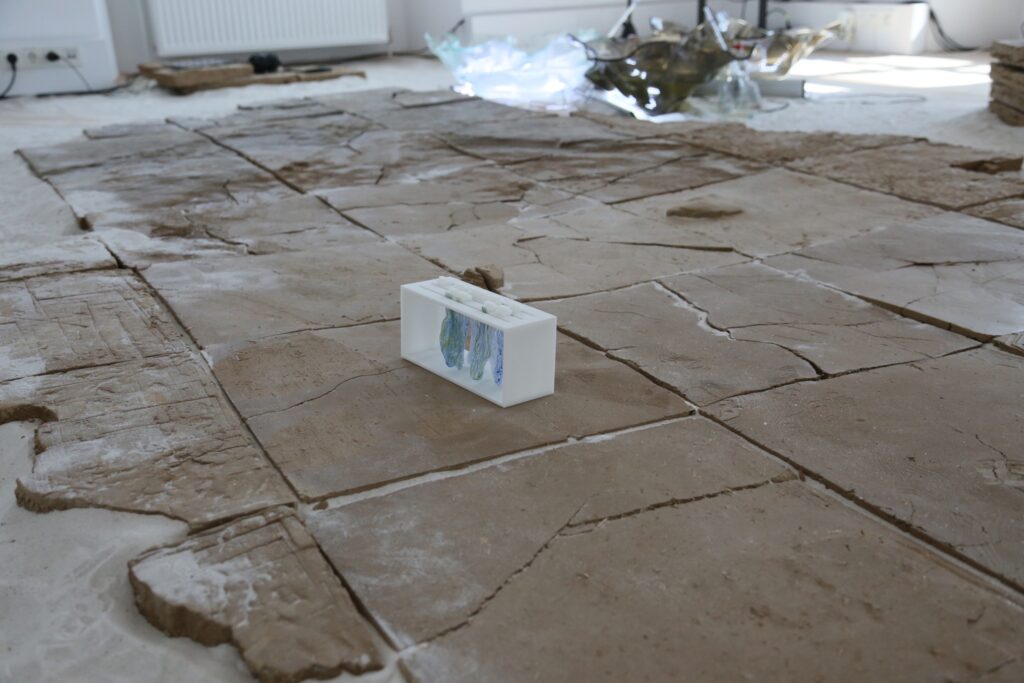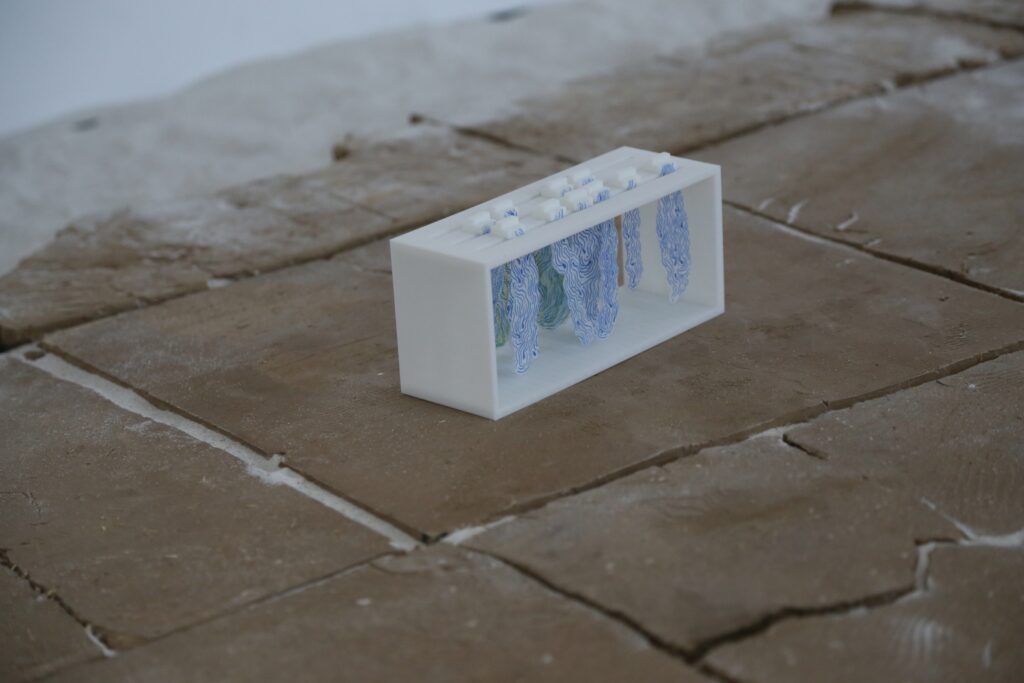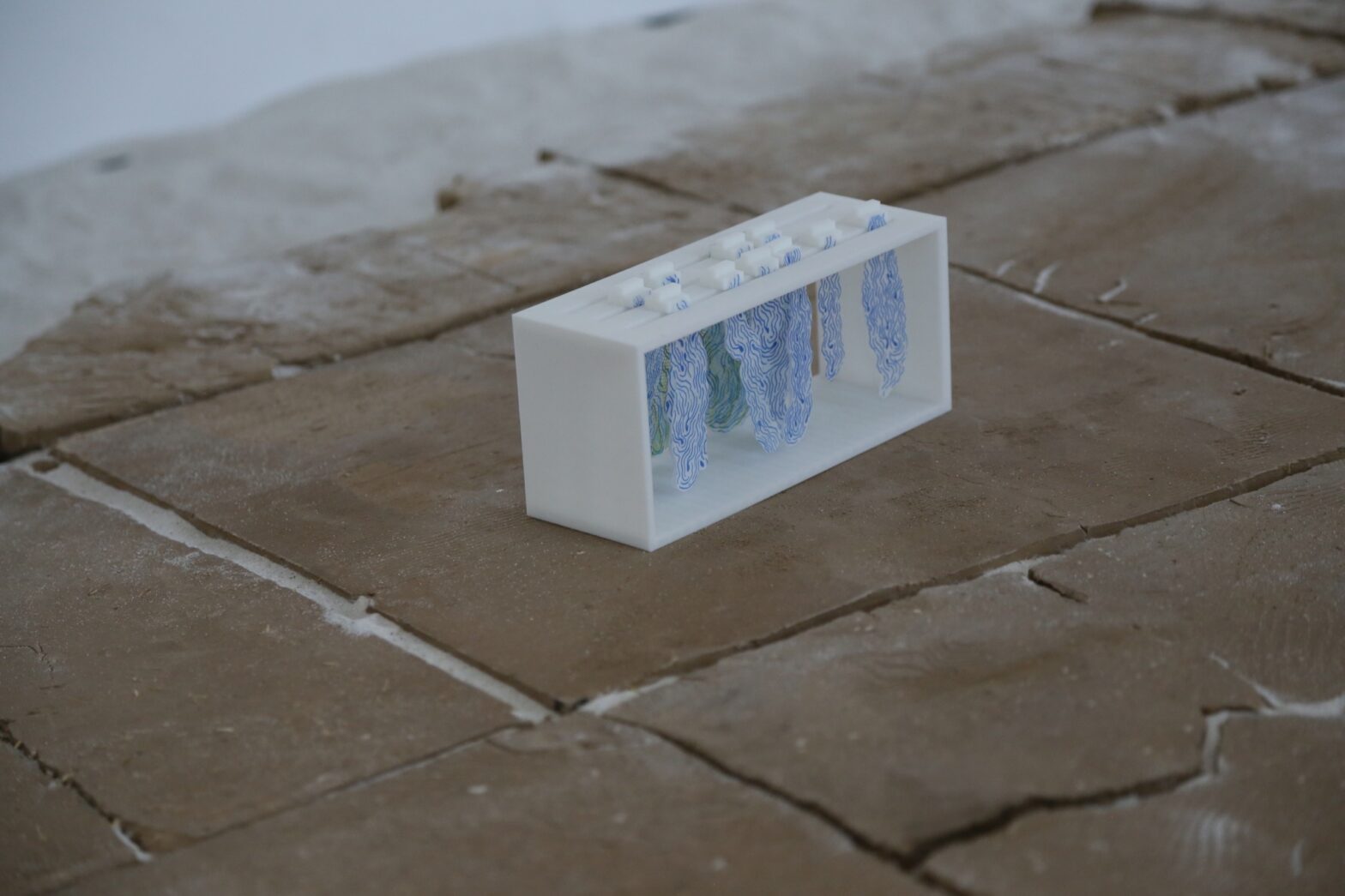Negin Ehtesabian
The installation features several parallel plates made of delicate calque paper or sheer fabric, moving and overlapping consistent with the light strength. These panels, or free form fabrics, display drawn designs of Chlamydomonas which can project density change by moving the panels through external threads — either interactive or automatic. The lighting creates a watery ambiance, and, ideally, it would be accompanied with some nature sounds. Incorporating sound could enhance the sensory experience of the installation.
This project investigates how environmental factors such as light and nutrition interact with Chlamydomonas and Euglena, a type of green algae. The research is to examine how different conditions affect the algae’s movement and density. This will involve feeding the algae and keeping them in a laboratory condition, collecting data, creating journals with drawings and photos, and providing a brief introduction of the findings.
This installation highlights the fragility and sensitivity of some of the most valuable single-celled organisms for humans and the environment. It offers an interactive experience that explores the relationship between the algae and light, providing an illuminating insight into this miniscule essential species which some biologists dedicate years of their lives to study.
Related Media

Luminescent dance: the Algae Light spectrum. Photo: Cosmo Schüppel

Luminescent dance: the Algae Light spectrum. Photo: Cosmo Schüppel
